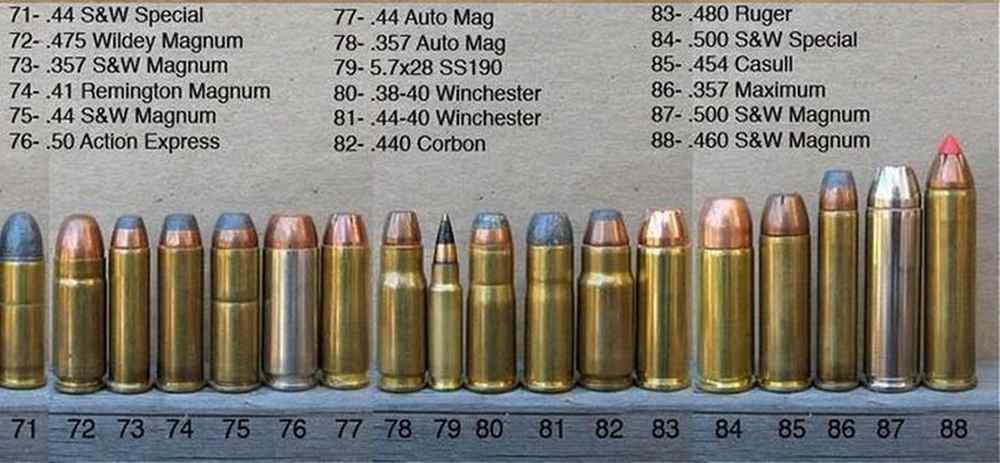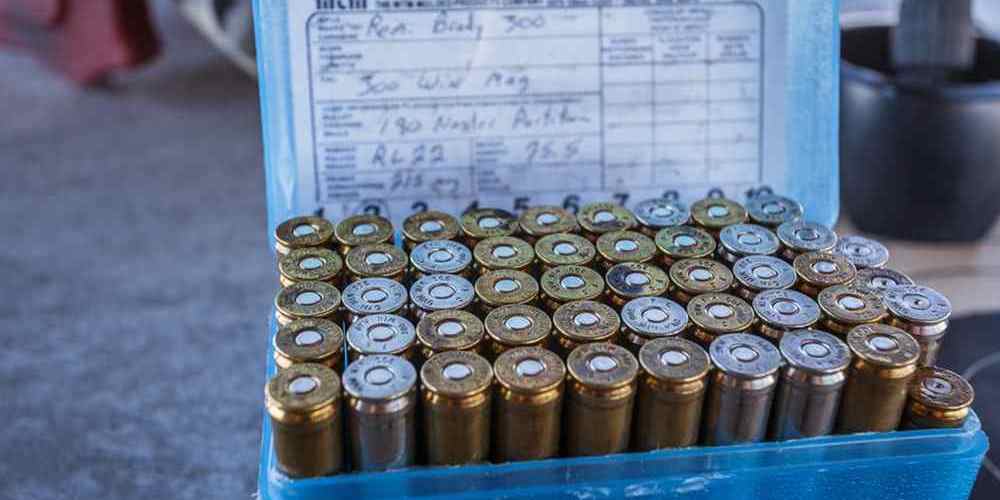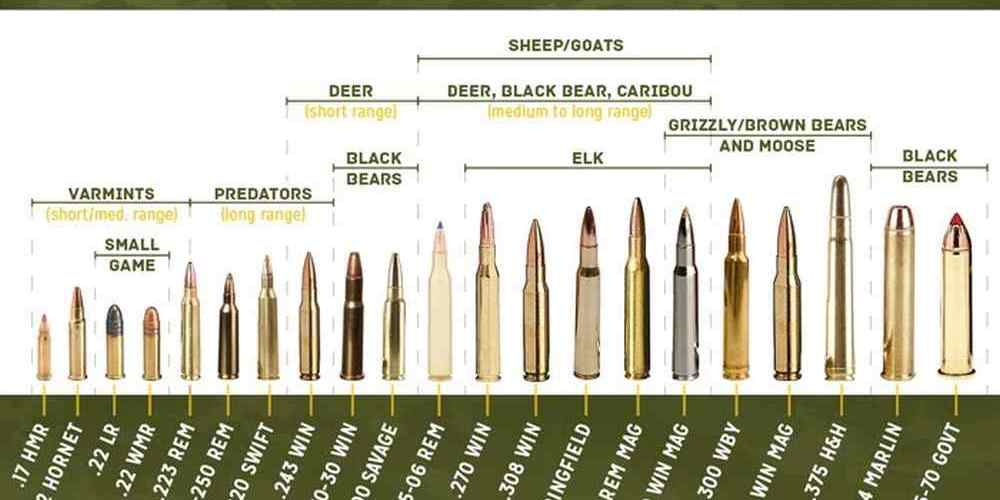“Rifle Rounds: Shaping Military History One Shot at a Time”
Evolution of Rifle Rounds in Warfare
Rifle rounds have played a crucial role in shaping military history, evolving over time to become more powerful and efficient. The development of rifle rounds has been a continuous process, driven by the need for greater accuracy, range, and stopping power on the battlefield.
In the early days of warfare, soldiers used muskets and smoothbore firearms that were loaded with loose powder and a ball. These weapons were inaccurate and had limited range, making them less effective in combat. However, the invention of rifling in the 16th century revolutionized firearms by adding spiral grooves inside the barrel, which imparted spin to the bullet for increased accuracy.
The introduction of Minié balls in the mid-19th century further improved the effectiveness of rifle rounds. These conical-shaped bullets were easier to load and had a tighter fit in the barrel, resulting in greater accuracy and range. The Minié ball also expanded upon impact, causing more damage to the target and increasing the lethality of the weapon.
The development of smokeless powder in the late 19th century marked another milestone in the evolution of rifle rounds. This new propellant burned cleaner and more efficiently than black powder, providing higher velocities and greater muzzle energy to the bullet. Smokeless powder also reduced fouling in the barrel, allowing for more rapid and sustained fire during combat.
The invention of the full metal jacket (FMJ) bullet in the early 20th century further enhanced the performance of rifle rounds. FMJ bullets are encased in a copper or steel jacket that improves penetration and stability, making them more effective against armored targets. The FMJ design also reduces lead fouling in the barrel and minimizes deformation upon impact, ensuring consistent performance in various conditions.
The adoption of intermediate cartridges in the mid-20th century represented a shift towards lighter and more compact rifle rounds. These cartridges offered a balance between power and recoil, allowing for greater control and accuracy in rapid-fire situations. Intermediate cartridges also facilitated the development of select-fire rifles and assault weapons, enabling soldiers to engage targets at different ranges with ease.
The introduction of polymer-cased ammunition in recent years has further revolutionized rifle rounds in warfare. These lightweight and corrosion-resistant casings offer improved performance and reliability compared to traditional brass casings. Polymer-cased ammunition also reduces the weight burden on soldiers and enhances logistics by simplifying storage and transportation.
Overall, the evolution of rifle rounds in warfare has been driven by the constant pursuit of greater effectiveness and efficiency on the battlefield. From muskets to modern assault rifles, the development of ammunition has played a critical role in shaping military history and influencing the outcome of conflicts. As technology continues to advance, we can expect further innovations in rifle rounds that will continue to impact the way wars are fought and won.

Role of Ammunition in Military Tactics
Rifle rounds have played a crucial role in shaping military tactics throughout history. The development of ammunition has had a significant impact on the way wars are fought, from the early days of muskets to the modern era of high-powered rifles. Understanding the role of ammunition in military tactics is essential for understanding the evolution of warfare.
One of the key ways in which ammunition has influenced military tactics is through its impact on range and accuracy. The development of rifled barrels and more powerful propellants has allowed soldiers to engage targets at greater distances with greater precision. This has led to changes in the way battles are fought, with soldiers able to engage the enemy from a distance rather than having to close in for hand-to-hand combat.
Another important aspect of ammunition in military tactics is its impact on firepower. The ability to fire multiple rounds quickly and accurately has given soldiers a significant advantage on the battlefield. This has led to the development of tactics such as suppressive fire, where soldiers lay down a barrage of fire to keep the enemy pinned down while other units maneuver into position.
Ammunition has also played a role in shaping the way battles are planned and executed. The availability of ammunition and the logistics of resupplying troops have a significant impact on the way battles are fought. In some cases, battles have been won or lost based on the availability of ammunition and the ability to resupply troops in the heat of battle.
The development of new types of ammunition has also had a significant impact on military tactics. The introduction of armor-piercing rounds, for example, has changed the way tanks are used on the battlefield. Soldiers armed with armor-piercing rounds can take out enemy tanks from a distance, reducing the need for close-quarters combat.
In addition to its impact on range, accuracy, firepower, and logistics, ammunition has also influenced the way soldiers are trained and equipped. Soldiers must be trained in the use of their weapons and ammunition, as well as in tactics for engaging the enemy. The type of ammunition available to soldiers also influences the way they are equipped and the tactics they use on the battlefield.
Overall, the role of ammunition in military tactics cannot be overstated. From the early days of muskets to the modern era of high-powered rifles, ammunition has shaped the way wars are fought. Understanding the impact of ammunition on military tactics is essential for understanding the evolution of warfare and the strategies used by soldiers on the battlefield.
Impact of Rifle Rounds on Battle Outcomes
Rifle rounds have played a crucial role in shaping the outcomes of battles throughout military history. The development of firearms and ammunition has revolutionized warfare, providing soldiers with increased firepower and accuracy on the battlefield. The impact of rifle rounds on battle outcomes cannot be understated, as they have influenced tactics, strategies, and ultimately the course of history.
One of the key advantages of rifle rounds is their long-range capabilities. Unlike earlier weapons such as muskets or bows, rifles are able to accurately hit targets at distances of hundreds of yards. This increased range allowed soldiers to engage enemy forces from a safe distance, giving them a significant tactical advantage on the battlefield. By being able to engage targets from afar, soldiers could pick off enemy combatants without putting themselves in harm’s way.
Furthermore, the accuracy of rifle rounds made them deadly weapons in the hands of skilled marksmen. With the ability to hit targets with precision, soldiers armed with rifles could take out key enemy personnel, disrupt enemy formations, and create chaos on the battlefield. This level of accuracy forced opposing forces to adapt their tactics and strategies, as they had to contend with the threat of being picked off from a distance.
In addition to their long-range capabilities and accuracy, rifle rounds also had a significant impact on the rate of fire in battles. Unlike earlier weapons that required time-consuming reloading processes, rifles could be fired more rapidly, allowing soldiers to lay down a continuous stream of fire on enemy forces. This increased rate of fire put pressure on opposing forces, forcing them to react quickly and decisively in order to avoid being overwhelmed.
The combination of long-range capabilities, accuracy, and rapid rate of fire made rifle rounds a formidable weapon on the battlefield. Soldiers armed with rifles were able to engage enemy forces from a distance, pick off key targets with precision, and lay down a continuous stream of fire to keep the enemy on their toes. This level of firepower had a profound impact on battle outcomes, as it forced opposing forces to adapt their tactics and strategies in order to counter the threat posed by rifle-armed soldiers.
Overall, the impact of rifle rounds on battle outcomes cannot be overstated. The development of firearms and ammunition revolutionized warfare, providing soldiers with increased firepower, accuracy, and rate of fire on the battlefield. The long-range capabilities of rifles allowed soldiers to engage enemy forces from a safe distance, while their accuracy and rapid rate of fire made them deadly weapons in the hands of skilled marksmen. The influence of rifle rounds on military history is undeniable, as they have shaped tactics, strategies, and ultimately the course of history.
Technological Advancements in Ammunition Production
When it comes to warfare, the importance of ammunition cannot be overstated. The type and quality of ammunition used in combat can have a significant impact on the outcome of battles and ultimately shape the course of military history. Over the centuries, there have been numerous technological advancements in ammunition production that have revolutionized the way wars are fought.
One of the most significant advancements in ammunition production was the development of rifled barrels. Prior to the introduction of rifling, muskets and other firearms had smoothbore barrels, which resulted in inaccurate and inconsistent shooting. Rifling, which involves cutting spiral grooves into the barrel of a firearm, greatly improved accuracy and range. This innovation allowed soldiers to engage targets at greater distances with greater precision, giving them a significant advantage on the battlefield.
Another important technological advancement in ammunition production was the development of smokeless powder. Prior to the invention of smokeless powder, firearms used black powder, which produced large amounts of smoke when fired. This smoke not only obscured the shooter’s vision but also gave away their position to the enemy. Smokeless powder, which burns more cleanly and efficiently, greatly reduced the amount of smoke produced when firing a weapon, allowing soldiers to maintain a tactical advantage by remaining concealed.
In addition to rifled barrels and smokeless powder, advancements in metallurgy have also played a crucial role in improving the quality of ammunition. The development of stronger and more durable metals has allowed for the production of ammunition that is more reliable and effective in combat. Modern ammunition is designed to withstand the high pressures and temperatures generated when fired, ensuring that it performs consistently and accurately in a variety of conditions.
Advancements in ammunition production have not only improved the performance of individual firearms but have also had a significant impact on the development of new weapons systems. For example, the introduction of caseless ammunition, which eliminates the need for a separate cartridge casing, has allowed for the creation of more compact and lightweight firearms. This has made it easier for soldiers to carry and maneuver their weapons in the field, increasing their mobility and effectiveness in combat.
Overall, technological advancements in ammunition production have had a profound impact on military history. From the introduction of rifled barrels to the development of smokeless powder and caseless ammunition, these innovations have revolutionized the way wars are fought and shaped the course of warfare. As technology continues to advance, it is likely that we will see even more groundbreaking developments in ammunition production that will further enhance the capabilities of our armed forces on the battlefield.
Historical Significance of Rifle Rounds in Warfare
Rifle rounds have played a crucial role in shaping military history throughout the centuries. The development of ammunition for rifles has had a significant impact on the way wars are fought, from the tactics used on the battlefield to the outcomes of major conflicts. Understanding the historical significance of rifle rounds in warfare can provide valuable insights into the evolution of military technology and strategy.
One of the key advancements in the history of rifle rounds was the invention of the Minié ball in the mid-19th century. This conical bullet revolutionized warfare by increasing the range and accuracy of rifles, making them more effective weapons on the battlefield. The Minié ball was designed to expand upon firing, causing more damage to the target and increasing the lethality of rifle fire. This innovation changed the way battles were fought, as soldiers could engage enemies from greater distances with greater precision.
The impact of rifle rounds on military history can be seen in major conflicts such as the American Civil War. The widespread use of rifles and Minié balls during this conflict led to a dramatic increase in casualties compared to previous wars. The long-range capabilities of rifles allowed soldiers to engage each other from hundreds of yards away, leading to devastating losses on both sides. The introduction of rifled muskets and Minié balls fundamentally changed the nature of warfare, forcing armies to adapt their tactics and strategies to account for the increased range and accuracy of rifle fire.
The development of new types of rifle rounds continued to shape military history in the 20th century. The introduction of smokeless powder and jacketed bullets in the late 19th and early 20th centuries further increased the effectiveness of rifles on the battlefield. Smokeless powder allowed for higher velocities and greater accuracy, while jacketed bullets improved penetration and terminal ballistics. These advancements made rifles even more lethal weapons, leading to changes in military tactics and the way wars were fought.
The impact of rifle rounds on military history can also be seen in more recent conflicts, such as the wars in Iraq and Afghanistan. The use of advanced rifle rounds, such as armor-piercing and hollow-point bullets, has played a significant role in these conflicts. Armor-piercing rounds are designed to penetrate body armor and vehicles, making them effective against heavily armored targets. Hollow-point bullets are designed to expand upon impact, causing more damage to soft tissue and increasing the lethality of rifle fire. These specialized rounds have been used by military forces to gain a tactical advantage on the battlefield, highlighting the continued importance of rifle rounds in modern warfare.
In conclusion, rifle rounds have had a profound impact on military history, shaping the way wars are fought and the outcomes of major conflicts. The development of new types of ammunition for rifles has led to advancements in military technology and strategy, influencing the tactics used on the battlefield and the effectiveness of soldiers in combat. Understanding the historical significance of rifle rounds in warfare can provide valuable insights into the evolution of military technology and the impact of these advancements on the course of history.







